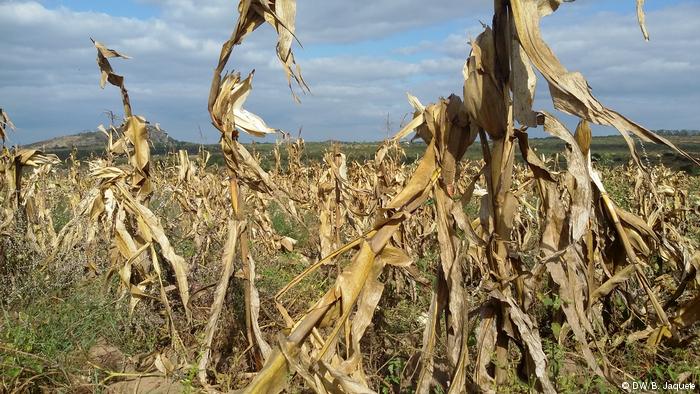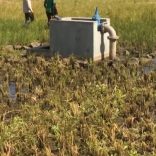Agriculture in the spotlight as Italy's Ambassador to Mozambique visits Manica province
Mozambique among Southern African countries suffering severe drought – UN

FILE - For illustration purposes only. [File photo: DW]
Mozambique and Angola are among the group of countries struggling with the impact of the severe drought that has affected more than 30 million people in southern Africa, a UN agency announced on Wednesday.
‘Angola, Malawi, Mozambique, Namibia, South Africa, and Zimbabwe are all grappling with the impact of the drought,” according to the World Food Programme (WFP) statement, while four countries in the region – Namibia, Malawi, Zambia and Zimbabwe – “have declared states of emergency” due to the climatic context.
The United Nations (UN) agency is, with partners including non-governmental organisations (NGOs) and humanitarian and development organisations, supporting national and regional response efforts and an appeal was made yesterday during a briefing on the emergency in Southern Africa in Pretoria, South Africa, to highlight the serious impacts of El Niño and the crisis caused by climate change.
‘More than 30 million people across Southern Africa have been affected by a severe drought. Millions could be pushed into acute hunger unless support is urgently mobilized to scale before the next lean season,’ the WFP said in the statement.
The unfolding impact of this El Niño phenomenon, which started globally in July 2023, has led to a severe rainfall deficit across the Southern African region, with temperatures five degrees above average, the WFP pointed out.
The region experienced its driest February in 100 years, receiving 20 percent of the usual rainfall expected for this period, which coincided exactly with the ‘crucial time for crop growth’, where 70% of people depend on rainfed agriculture to survive, it warned.
‘The emergency situation is adding more suffering to existing vulnerabilities. Even before the drought, levels of food insecurity and humanitarian need were high, due to socio-economic challenges, food prices and the aggravated impacts of the climate crisis,’ it lamented.
For the WFP, the climate crisis hurts children even more because, with the loss of livelihoods and the additional burden on families, they are at risk of abuse, displacement, hunger and diseases such as cholera.
‘Drought and floods also have a ripple effect on access to education, leaving children vulnerable to child labor and child marriage,’ it stressed.
“El Niño might be ending, but its impacts are far from over,” said Adeyinka Badejo, Deputy Regional Director for the World Food Programme in Southern Africa.
For this reason, ‘assessments are underway to gauge the impact of the drought on agricultural production, and anticipatory actions have been triggered to provide immediate assistance to vulnerable communities. However, the magnitude of the challenge calls for additional resources to effectively respond to the crisis and safeguard lives and livelihoods.’, said the sub-regional leader in Southern Africa of the UN Food and Agriculture Organisation (FAO), Patrice Talla, quoted in the statement.
With a predicted shortfall in agriculture production, especially maize, farm incomes will drop, Talla explained.
‘In addition, food price increases will leave farmers with less to invest in seed, fertilizers, and equipment, all crucial for maintaining and enhancing future production levels,’ he concluded.
- You may read, download the full document “Urgent call to action to address historic El Niño drought in Southern Africa,” HERE.
#JustIn: @UN and partners urgently call for action to address #ElNino!
🌍 Over 30 million people in Southern #Africa are facing a historic El Niño-fueled drought.
Without immediate support, millions risk acute hunger.
🚨 Let’s act now before the next lean season!— WFP southern Africa (@WFP_SAfrica) June 5, 2024













Leave a Reply
Be the First to Comment!
You must be logged in to post a comment.
You must be logged in to post a comment.